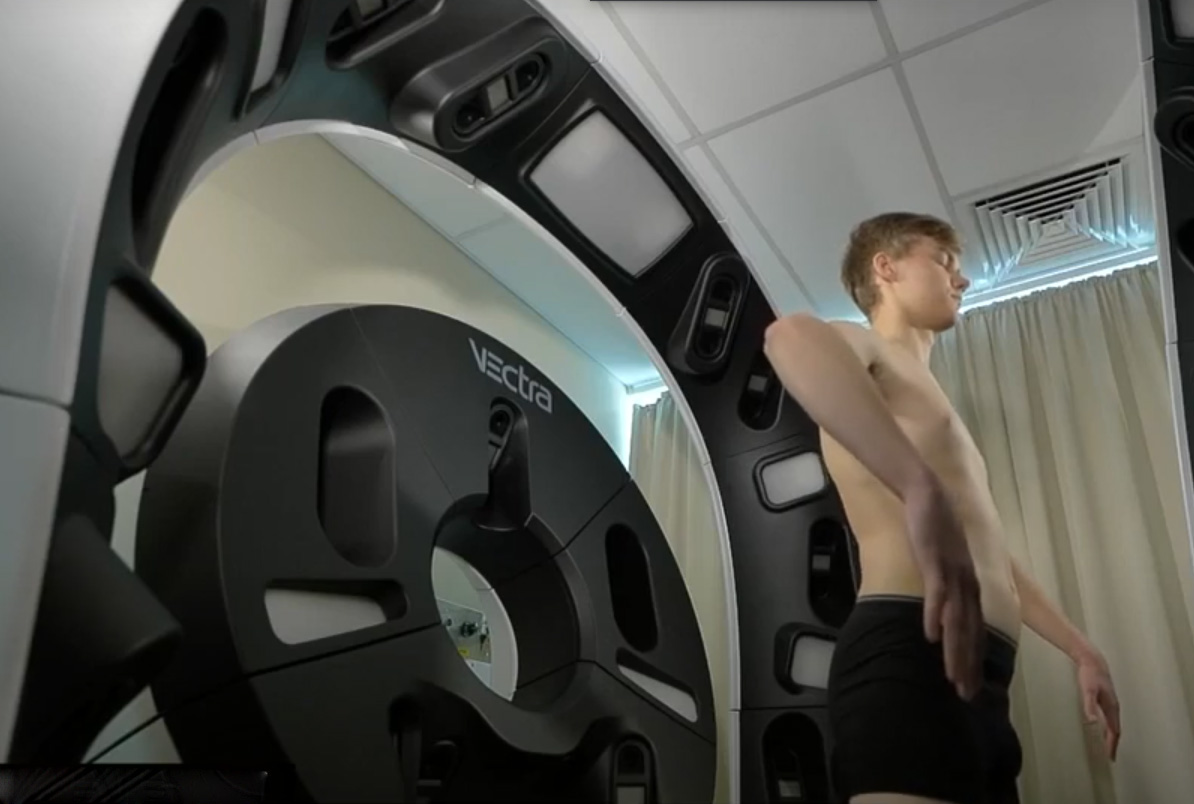Dermatology centres across Australia are to use 3D whole body imaging as part of the world’s largest melanoma imaging trial that aims to develop more efficient and effective screening for the early detection of skin cancer.
Led by University of Queensland researchers, the Australian Centre of Excellence in Melanoma Imaging and Diagnosis (ACEMID) program comprises a network of 15 imaging hubs in health services located across Queensland, Victoria and New South Wales that between them contain 15 Vectra 3D imaging machines.
The machines create a 3D avatar to undertake full body mapping, allowing researchers to investigate and track moles and skin spots over time.
The ACEMID team plans to create a national database of up to 100,000 patient images taken from across the sites. These scans will then be analysed to help develop a skin cancer and melanoma algorithm using artificial intelligence.
 Study investigator Professor Peter Soyer of UQ says that by enabling researchers to track moles and skin spots over time using full body mapping, the technology could be a game-changer for melanoma detection.
Study investigator Professor Peter Soyer of UQ says that by enabling researchers to track moles and skin spots over time using full body mapping, the technology could be a game-changer for melanoma detection.
“This technology is revolutionising early melanoma detection using 3D state-of-the-art body imaging systems that take an image in milliseconds,” he said.
“The telemedicine network allows dermatologists and medical professionals to detect skin cancers remotely, even from the other side of the country.
“Using algorithms created by artificial intelligence, the 3D imaging systems are able to analyse the images and produce a full body skin spot map, which transforms the way we will monitor patients in the future.”
The project brings together three leading Australian universities in skin research, UQ, The University of Sydney and Melbourne’s Monash University.
ACEMID Victorian Clinical Lead Dr Victoria Mar, Director of the Victorian Melanoma Service at the Alfred Hospital said the $3.2 million melanoma cohort study will be the first in the world to document on such a large scale the whole skin surface of participants with histopathology images and other details of 15,000 participants.
“Early detection of melanoma leads to better outcomes, and we hope to enhance this with improved imaging technology. I’d like to thank the Australian Cancer Research Foundation and their generous donors for funding the ACEMID infrastructure, without which all of the clinical trials and studies that we are now planning wouldn’t be possible.”
In NSW the study investigator Professor Pablo Fernández-Peñas, head of the Westmead Hospital dermatology department, said the advantage of the system was that it provided a whole body scan in one image, a more comprehensive system than the current method of documenting every spot with a handheld camera.
“So we will be able to get a baseline photo of every patient, and then we can follow these people along the years and see if any lesion changes or grows and looks like it’s going to grow into a melanoma,” he said.
“Then as soon as it starts to change we can remove it.”
Professor Fernández-Peñas said people in western Sydney are being encouraged to register their interest now for the trial despite the pandemic lockdown – and get vaccinated for COVID-19.
“We are ready to go as soon as everybody gets vaccinated,” he said.
The 15 ACEMID sites across Australia include the following locations:
Queensland
- Princess Alexandra Hospital (Pilot site already exists, will be joined to ACRF network)
- Cairns
- Sunshine Coast
- Royal Brisbane Women’s Hospital
- Townsville
- Mt Isa
New South Wales
- Westmead Hospital
- Melanoma Institute Australia
- Royal Prince Alfred Hospital
- Dubbo
- Port Macquarie/Coffs Harbour
Victoria
- The Alfred Hospital
- Skin Health Institute
- Bendigo Health
- Peter MacCallum Cancer Centre
- Bass Coast Health, Wonthaggi